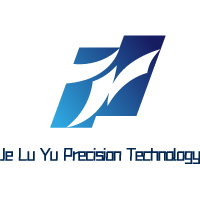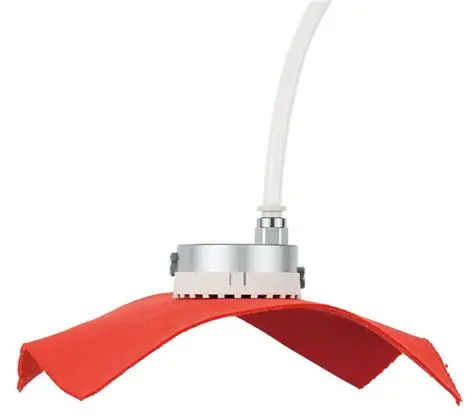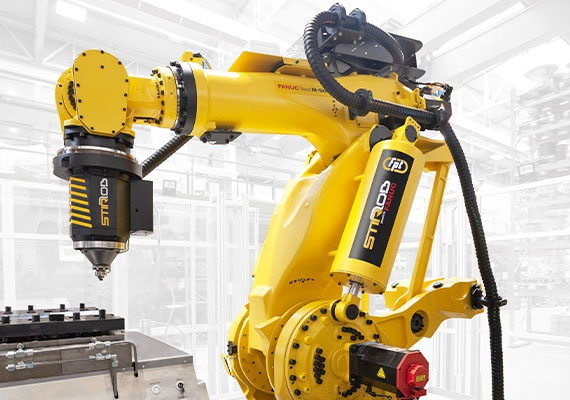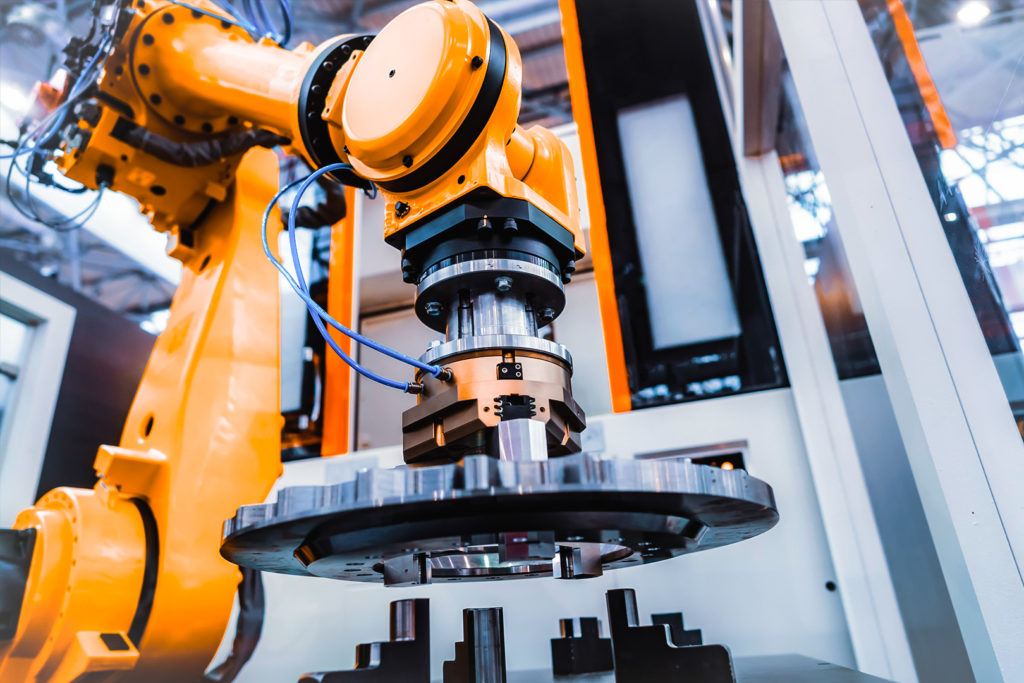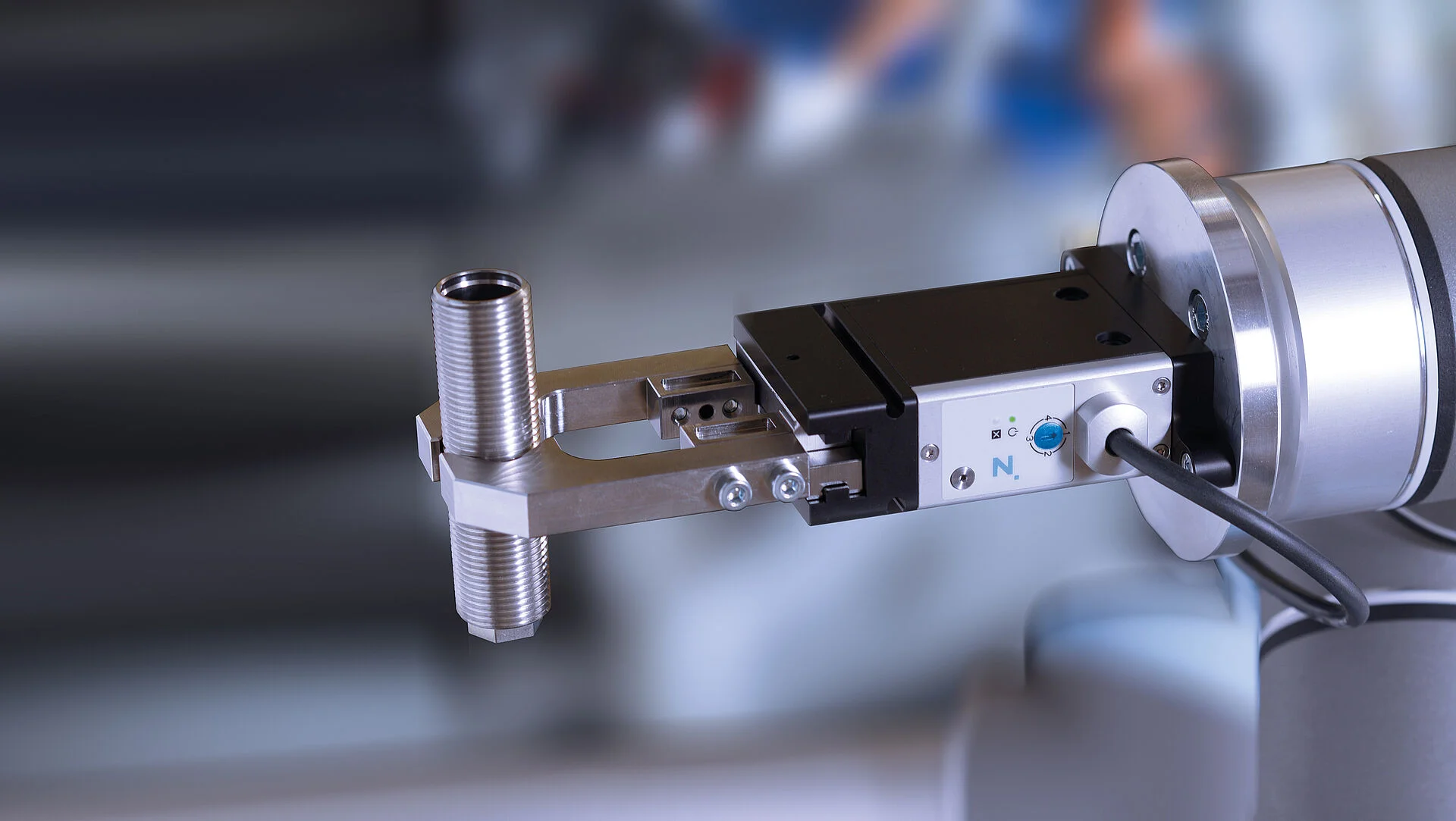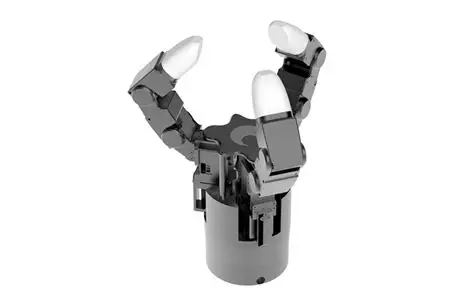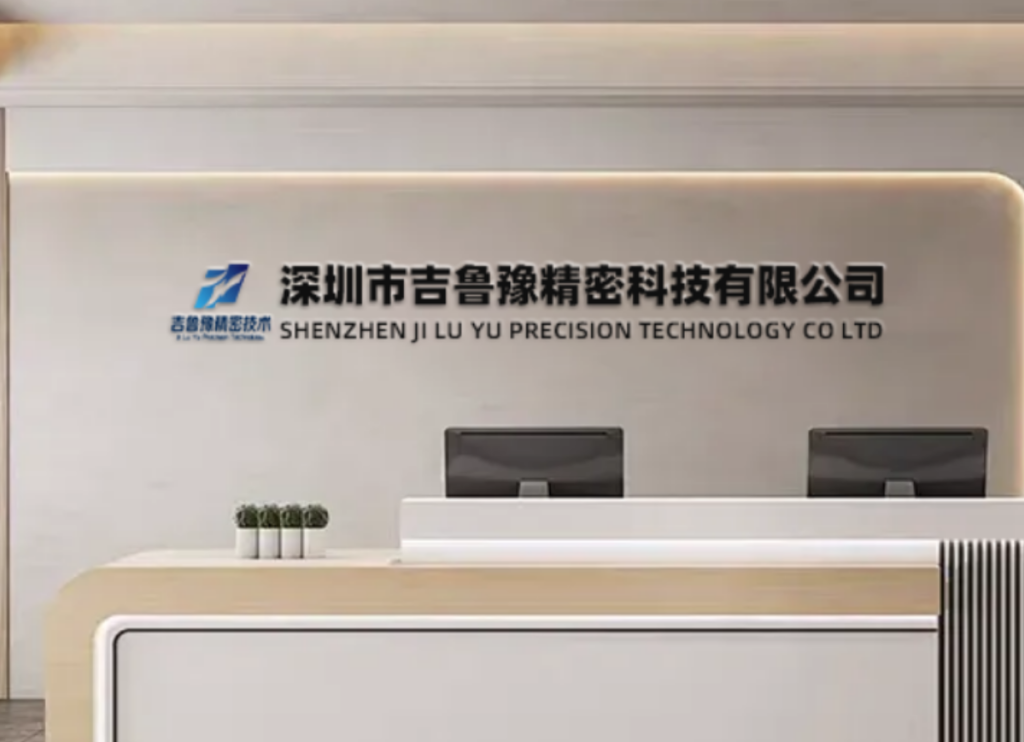Vacuum Gripping Technology: The Precision Interface in Modern CNC Automation
In the highly engineered world of CNC machining, where surface integrity and dimensional accuracy are paramount, the evolution of material handling systems has reached a critical juncture. Vacuum Gripper Robot technology represents a sophisticated solution for manufacturers seeking to maintain perfect surface conditions while achieving high-speed automation. At JLY Precision Technology, our implementation of advanced Vacuum Gripper Robot systems has demonstrated remarkable success in handling everything from delicate composite materials to large-format metal plates without compromising the meticulous surface quality our clients require.
This comprehensive technical examination delves into the fundamental principles, system architectures, and strategic implementation methodologies of Vacuum Gripper Robot technology within precision manufacturing environments. We will explore the complete spectrum of vacuum gripping solutions, from basic venturi systems to advanced intelligent vacuum control, providing manufacturers with a detailed framework for optimizing their automated handling processes.
The Fundamental Physics of Vacuum Gripping Technology
Understanding the core principles of vacuum gripping is essential for effective implementation in manufacturing environments. Vacuum Gripper Robot systems operate on well-established fluid dynamics principles, but their practical application requires sophisticated engineering:
-
Pressure Differential Fundamentals: Vacuum grippers operate on the principle of creating a pressure differential between the gripper-workpiece interface and the surrounding atmosphere. The holding force generated follows the relationship F = P × A, where F is the force in Newtons, P is the pressure differential in Pascals, and A is the effective sealing area in square meters.
-
Venturi Effect Applications: Many industrial vacuum systems utilize the Venturi effect, where compressed air passing through a constricted section creates a region of low pressure, generating vacuum without moving parts. The efficiency of these systems depends on the nozzle geometry, air pressure, and flow characteristics.
-
Vacuum Pump Technologies: Electric vacuum pumps offer precise control and quiet operation, with capabilities ranging from simple diaphragm pumps to sophisticated multi-stage rotary vane systems capable of achieving high vacuum levels with minimal energy consumption.
-
Flow Rate vs. Ultimate Vacuum Considerations: System design must balance the competing requirements of rapid evacuation (high flow rate) against maximum holding force (high vacuum level). This optimization depends on workpiece porosity, seal effectiveness, and required cycle times.
The practical implementation of these principles in Vacuum Gripper Robot systems requires careful consideration of workpiece characteristics, operational environment, and performance requirements to achieve optimal results.
Advanced Bernoulli Gripping Principles for Delicate Applications
Beyond conventional vacuum gripping, Bernoulli technology offers non-contact handling solutions for ultra-sensitive surfaces:
-
Aerodynamic Lift Generation: Bernoulli grippers utilize high-velocity air flow across a surface to create a low-pressure region, generating lifting force without physical contact. This principle follows Bernoulli’s equation, where increased fluid velocity decreases pressure.
-
Vortex Flow Applications: Advanced designs incorporate vortex containment chambers that stabilize the air flow pattern, providing more consistent lifting forces and improved stability during robotic manipulation.
-
Coanda Effect Integration: Some systems utilize the Coanda effect to attach air flows to contoured surfaces, enabling handling of slightly curved components without custom tooling.
-
Laminar Flow Optimization: Precision-engineered nozzle designs create laminar air flow patterns that minimize turbulence and prevent particulate generation, critical for cleanroom and optical component applications.
Technical Classification of Vacuum Gripping Systems
The engineering landscape of Vacuum Gripper Robot technology encompasses multiple distinct approaches, each with specific operational characteristics and application suitability:
1. Vacuum Generation Systems
-
Ejector-Based Venturi Systems: Utilize compressed air to generate vacuum through fluid dynamics, offering simplicity, reliability, and explosion-proof operation suitable for harsh environments.
-
Electric Vacuum Pumps: Provide precise vacuum control with variable speed operation, offering energy efficiency and quiet operation for continuous duty applications.
-
Centralized Vacuum Systems: Serve multiple workstations through a networked vacuum supply, ideal for large-scale manufacturing operations with consistent vacuum requirements.
2. Cup and Seal Technologies
-
Bellows-Style Vacuum Cups: Feature accordion-like designs that provide significant vertical compensation for handling uneven surfaces or multiple height components.
-
Flat Seal Designs: Utilize precision-lipped seals for optimal performance on flat, smooth surfaces where maximum seal efficiency is required.
-
Specialty Material Formulations: Include silicone, polyurethane, and fluorocarbon compounds engineered for specific application requirements including high temperature, oil resistance, or FDA compliance.
-
Multi-Stage Seal Systems: Incorporate primary and secondary sealing elements that provide backup protection against vacuum loss in critical applications.
3. Intelligent Control and Monitoring Systems
-
Analog Vacuum Sensors: Provide continuous vacuum level monitoring with analog output signals for precise process control and data acquisition.
-
Digital Switching Sensors: Offer programmable setpoints for vacuum monitoring with digital outputs for system control and fault detection.
-
Integrated Flow Monitoring: Combine vacuum and flow rate sensing to detect system leaks, cup wear, or workpiece porosity changes before they impact process reliability.
-
Network-Compatible Controllers: Enable system integration through industrial communication protocols including EtherCAT, PROFINET, and EtherNet/IP for Industry 4.0 implementations.
Strategic Advantages in CNC Machining Applications
The implementation of Vacuum Gripper Robot systems in precision manufacturing environments delivers significant operational advantages across multiple performance metrics:
-
Optimal Surface Preservation: Unlike mechanical grippers that apply concentrated point loads, vacuum systems distribute holding force evenly across the contact area, eliminating marking, distortion, or surface damage on finished components.
-
Rapid Cycle Time Capability: The instantaneous engagement and release characteristics of vacuum systems enable significantly reduced handling times compared to mechanical actuation, particularly beneficial in high-volume production where cycle time reduction directly impacts throughput.
-
Exceptional Geometric Flexibility: Vacuum cup arrays can be configured to match virtually any component geometry, providing stable handling of complex contours, irregular shapes, and size variations without custom tooling requirements.
-
Minimal Access Space Requirements: The low-profile nature of vacuum grippers provides superior tool clearance, enabling complex multi-axis machining operations without end-effector interference with cutting tools or machine components.
-
Adaptability to Diverse Materials: Properly configured vacuum systems can handle materials ranging from polished metals and composites to glass, plastics, and finished products without surface preparation or special accommodations.
Technical Comparison: Vacuum Gripping vs. Alternative Technologies
The following table provides a detailed technical comparison of vacuum gripping systems against alternative technologies in precision manufacturing applications.
Table 1: Comprehensive Gripping Technology Comparison Matrix
| Technical Parameter | Vacuum Gripper Robot | Mechanical Gripper | Magnetic Gripper | Adhesive Handling |
|---|---|---|---|---|
| Maximum Force Density | Medium (0.5-1.2 N/cm²) | High (2.0-5.0 N/cm²) | High (3.0-8.0 N/cm²) | Low (0.1-0.5 N/cm²) |
| Surface Contact Requirement | Continuous Seal Area | Discrete Contact Points | Ferromagnetic Material | Chemical Compatibility |
| Response Time | Fast (50-200 ms) | Medium (100-300 ms) | Very Fast (10-50 ms) | Slow (500-2000 ms) |
| Energy Consumption | Medium | Low-Medium | Low | Very Low |
| Workpiece Damage Risk | Very Low | Medium-High | Low-Medium | Medium |
| Maintenance Interval | Medium (1000-2000 hrs) | Medium (1500-2500 hrs) | Long (3000-5000 hrs) | Short (100-500 hrs) |
| Complex Geometry Handling | Excellent | Limited | Good | Limited |
| Operating Cost | Medium | Low-Medium | Low | High |
| Cleanroom Compatibility | Good with Filtration | Poor | Poor | Medium |
| Temperature Resistance | Medium (150°C max) | High (300°C) | High (250°C) | Low (80°C) |
Implementation Methodology for Vacuum Gripping Systems
Successful integration of Vacuum Gripper Robot technology requires systematic analysis and careful planning across multiple technical dimensions:
Workpiece Compatibility Assessment:
-
Surface Energy Analysis: Quantitative measurement of workpiece surface characteristics to determine minimum vacuum requirements and seal compatibility.
-
Permeability Testing: Evaluation of material porosity and surface roughness to determine vacuum flow requirements and potential leakage compensation.
-
Geometric Stability Evaluation: Assessment of component rigidity and deflection characteristics under vacuum load to ensure dimensional stability during handling.
Operational Environment Considerations:
-
Contamination Control Requirements: Evaluation of cleanroom standards, particulate generation, and filtration requirements for specific manufacturing environments.
-
Thermal Management Planning: Assessment of ambient temperature ranges and potential thermal cycling effects on seal performance and material properties.
-
Compressed Air Quality Standards: Verification of air quality requirements including filtration, drying, and pressure regulation for reliable system operation.
Case Studies: Vacuum Gripper Robot Applications in Precision Manufacturing
Case Study 1: Carbon Fiber Composite Aerospace Panel Handling
-
Challenge: An aerospace manufacturer required automated handling of large-format carbon fiber composite panels (2.5m × 4.0m) with surface finish requirements prohibiting any contact marking. The panels featured complex curvature and required positioning accuracy of ±0.25mm for drilling and trimming operations.
-
Solution: JLYPT engineered a custom Vacuum Gripper Robot system featuring 48 individually controlled vacuum zones with pressure sequencing to ensure even load distribution during engagement. The system incorporated flexible bellows cups with custom durometer silicone to accommodate panel curvature while maintaining seal integrity.
-
Result: Achieved consistent positioning accuracy of ±0.15mm with zero surface marking across 12,000 handling cycles. Reduced panel handling time from 45 minutes manually to 3.5 minutes automated, while eliminating the risk of delamination from point loading.
Case Study 2: High-Speed Glass Substrate Processing
-
Challenge: A display manufacturer needed to automate handling of ultra-thin glass substrates (0.3mm thickness) with surface flatness requirements demanding completely distortion-free handling. Traditional vacuum systems created micro-distortions that affected subsequent deposition processes.
-
Solution: We implemented a Bernoulli non-contact Vacuum Gripper Robot system utilizing laminar air flow technology. The system maintained a consistent 0.5mm air gap while generating 120N of lifting force, with precision height sensors maintaining optimal standoff distance throughout the handling cycle.
-
Result: Eliminated handling-induced distortion completely, improving deposition process yield from 87% to 99.6%. Achieved handling cycle time of 8 seconds while maintaining particle counts within Class 100 cleanroom specifications.
Case Study 3: Mixed-Material Automotive Component Assembly
-
Challenge: An automotive supplier required simultaneous handling of multiple component materials (aluminum, plastic, and rubber) within a single robotic workcell for just-in-time assembly operations. The variation in surface characteristics made consistent vacuum handling problematic.
-
Solution: JLYPT developed an intelligent multi-zone Vacuum Gripper Robot system with material recognition capability. The system utilized vacuum sensors to detect material characteristics upon contact and automatically adjusted vacuum levels and flow rates optimal for each material type.
-
Result: Achieved 99.8% successful pickup rate across all materials while reducing system adjustment time from 45 minutes per changeover to completely automated adaptation. The solution enabled true mixed-model production with zero hardware changeovers between component variants.
Future Development Trajectories in Vacuum Gripping Technology
The continuing evolution of Vacuum Gripper Robot technology focuses on several key innovation vectors:
-
Intelligent Adaptive Control Systems: Implementation of real-time vacuum monitoring with machine learning algorithms that optimize engagement parameters based on historical performance data and immediate sensor feedback.
-
Integrated Metrology Functions: Incorporation of surface profiling and dimensional verification capabilities directly within vacuum gripper systems to provide closed-loop quality confirmation during handling operations.
-
Advanced Material Science Applications: Development of smart polymer seals with adaptive compliance characteristics and self-healing properties to maintain performance across wider operating conditions.
-
Energy Recovery Systems: Implementation of regenerative vacuum technology that captures energy during release cycles, reducing overall system energy consumption by up to 40%.
Implementation Best Practices and Technical Considerations
Successful deployment of Vacuum Gripper Robot systems requires adherence to established engineering principles and careful attention to application-specific factors:
System Design Guidelines:
-
Safety Factor Calculations: Application of appropriate safety margins (typically 4:1 to 8:1) based on acceleration forces, potential impact loads, and surface condition variations.
-
Flow Path Optimization: Careful design of vacuum circuits, tubing diameters, and fitting selections to minimize flow resistance and achieve required evacuation times.
-
Redundancy Planning: Implementation of multiple vacuum zones, backup vacuum sources, and emergency holding systems for critical applications where component drop cannot be tolerated.
Operational Safety Protocols:
-
Vacuum Monitoring Standards: Establishment of minimum vacuum thresholds with redundant sensor verification before initiating movement sequences.
-
Emergency Power Management: Uninterruptible power supply systems for electric vacuum generators to ensure holding force maintenance during power interruptions.
-
Regular Maintenance Procedures: Scheduled inspection and replacement of wear components including vacuum cups, filters, and seals based on documented service intervals.
Conclusion: Strategic Advantages of Vacuum Gripping Technology
The implementation of advanced Vacuum Gripper Robot systems represents a significant opportunity for manufacturers to enhance automation capability while preserving component quality across diverse materials and applications. The technology offers compelling advantages in surface preservation, flexibility, and operational cleanliness compared to alternative gripping methods, particularly in precision manufacturing environments where surface integrity is critical.
At JLY Precision Technology, our systems engineering approach to Vacuum Gripper Robot integration ensures that our clients benefit from optimized material handling solutions that complement our precision machining capabilities. By understanding both the theoretical foundations and practical implementation considerations of vacuum gripping technology, we deliver integrated manufacturing systems that maximize productivity while maintaining the highest quality standards.
Ready to explore how vacuum gripper robot technology can transform your manufacturing operations? Contact JLY Precision Technology today to discuss your specific application requirements with our automation engineering specialists. Our team will provide comprehensive technical analysis and implementation planning to optimize your material handling processes while protecting your valuable components.
